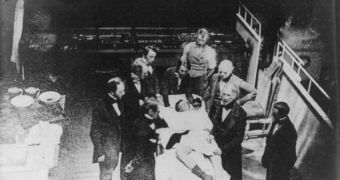Seishu Hanaoka is the name of the first surgeon in the world to have placed his patients under a general anesthetic for major surgery, more than 40 years before the first European medics were able to do so and claim all the credits for their achievement. Dated October 13th, 1804, the surgery saw 60-year-old Kan Aiya rendered unconscious via the use of a brewed mixture of natural plants. The surgeon then went on to perform a breast cancer operation, completely removing the woman's tumor.
At the same time, in Europe, which had the most advanced background of surgical knowledge in the world and whose surgeons were able to perform even the most delicate procedures, doctors still had to tie down their patients and put gags in their mouths so that their screams wouldn't make them lose their focus. That is to say, the only anesthetics known at the time were massive amounts of alcohol or opium. However, these substances only numbed the pain.
English writer Fanny Burney said, “When the dreadful steel was plunged into my breast (...) I began a scream that lasted unintermittingly during the whole time of the incision. I almost marvel that it rings not in my ears still, so excruciating was the agony.” This is a paragraph from a letter she sent her sister, in which she detailed the surgery that had been performed on her for breast cancer, while she was still fully conscious. At the time she underwent the procedure, in 1811, neither her, nor the team performing the operation had any idea that a technique to numb the pain completely had already been devised in Japan.
The first anesthesiologist in the world required more than 20 years to perfect his herbal mix, which he abundantly tested on cats and dogs. The problems seemed insurmountable at the time. Too low dosages, and the animals would still feel pain. Too high, and they suffered massive brain damage or died swiftly. Hanaoka needed a lot of courage to perform his first operation on a human, but he apparently pulled it off without the patient feeling the smallest of pains.
After that one operation, the great surgeon reportedly successfully completed an additional 150, which meant that he gained country-wide fame. Until the end of his life, he had numerous students and became famous for the fact that he could perform surgical procedures other doctors deemed impossible. But, by the time Japan re-opened its gates to strangers in 1853, the Western world had no interest in his discovery, as medics there had already discovered ether.

 14 DAY TRIAL //
14 DAY TRIAL //